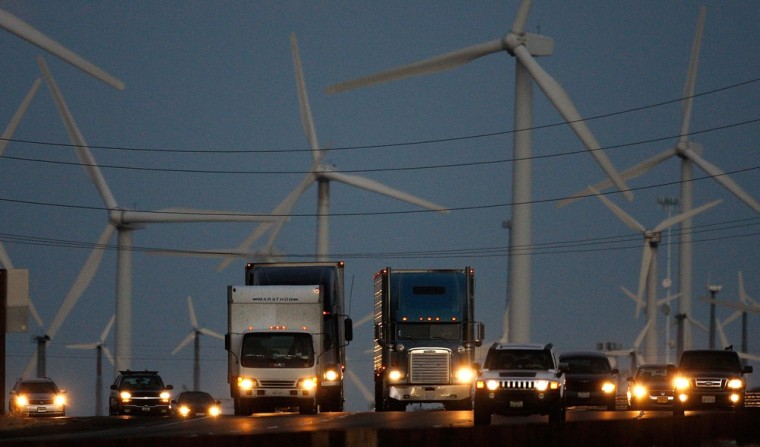Future tractor-trailers, school buses, delivery vans, garbage trucks and heavy-duty pickup trucks will have to get better mileage under first-ever fuel efficiency rules for those types of vehicles.
The Environmental Protection Agency and the Transportation Department on Monday announced the proposed standards for three categories of heavy trucks:
- For big rigs, the standards would begin in the 2014 model year and achieve up to a 20 percent reduction in carbon dioxide emissions and fuel consumption by 2018.
- For heavy-duty pickup trucks and vans, separate gasoline and diesel truck standards are proposed, starting in 2014 and achieving up to a 10 percent reduction for gasoline vehicles and 15 percent reduction for diesel vehicles by 2018.
- For trucks like school buses and delivery vans, the standards would start in 2014 and achieve up to a 10 percent reduction in fuel consumption and CO2 emissions by 2018.
The White House has pushed for tougher fuel economy standards across the nation's fleet as a way to reduce dependence on oil and cut greenhouse gas emissions tied to global warming.
The fleet of new cars, pickup trucks and SUVs will need to reach 35.5 miles per gallon by 2016, and the government is developing plans for future vehicle models that could push the standards to 47 mpg to 62 mpg by 2025.
Medium-duty and heavy-duty trucks are much less fuel-efficient than conventional automobiles; the fleet of tractor-trailers typically get about 6 mpg to 7 mpg, while work trucks can achieve 10 to 11 mpg. But they still consume about 20 percent of the transportation fuel in the U.S.
Margo Oge, director of the EPA's Office of Transportation and Air Quality, told reporters last week the proposed rules would be a "win-win situation for the country, the economy, climate change and energy security." She declined to release details.
President Barack Obama was joined by truck manufacturers in the Rose Garden in May when he said the government would release the first-ever proposed standards for greenhouse gas emissions and fuel efficiency for large trucks this year. Obama estimated then that the fuel efficiency of tractor-trailers could be improved by 25 percent using existing technologies.
"This is going to bring down the costs of transporting — for transporting goods, serving businesses and consumers alike," Obama said on May 21, flanked by executives with Daimler Trucks, Volvo, Cummins and Navistar, and trucking industry and union officials.
The improvements in fuel efficiency will come through a combination of more efficient engines, improved aerodynamics and better tires.
Environmental groups have pointed to a National Academy of Sciences report this year that said the trucks could make broad improvements during the decade through existing technologies. The report found that using advanced diesel engines in tractor-trailers could reduce fuel consumption by up to 20 percent by 2020 while hybrid versions of garbage trucks and buses could see a 35 percent cut in fuel use by 2020.
"Whether you are a company or an individual truck owner, you will be saving money on day one because you'll be saving more on fuel than increased loan payments on a big truck," said David Friedman, research director for the clean vehicles program of the Union of Concerned Scientists.
The Obama administration plans to finalize the standards after a 60-day public comment period.
